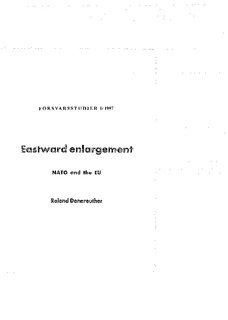| dc.description | With the peaceful revolutions of 1989, the Central and East European countries reunified a Europe which had been divided throughout the Cold War. It has been natural that most of these states have demanded and have, in priciple, been promised membership of the two institutions which have been perceived to be the foundations of Western Europe's security and prosperity - NATO and the EU. However, progress towards NATO and EU enlargement has been fraught with difficulties and obstacles. This study analyses the major constraints against enlargement, focusing on the difficulties that NATO and the EU have faced in adapting themselves to the post-Cold War strategic enviroment. The study alo evaluates the progress that has nevertheless been made and assesses the future prospects for enlargement, focusing in particular on the implications of the expected NATO decision to be the first to invite new members to join the organisation. | en_US |
